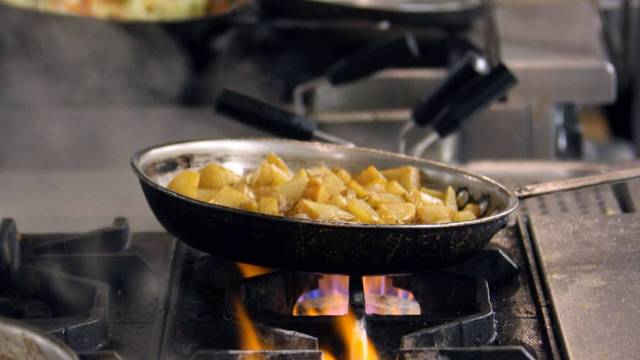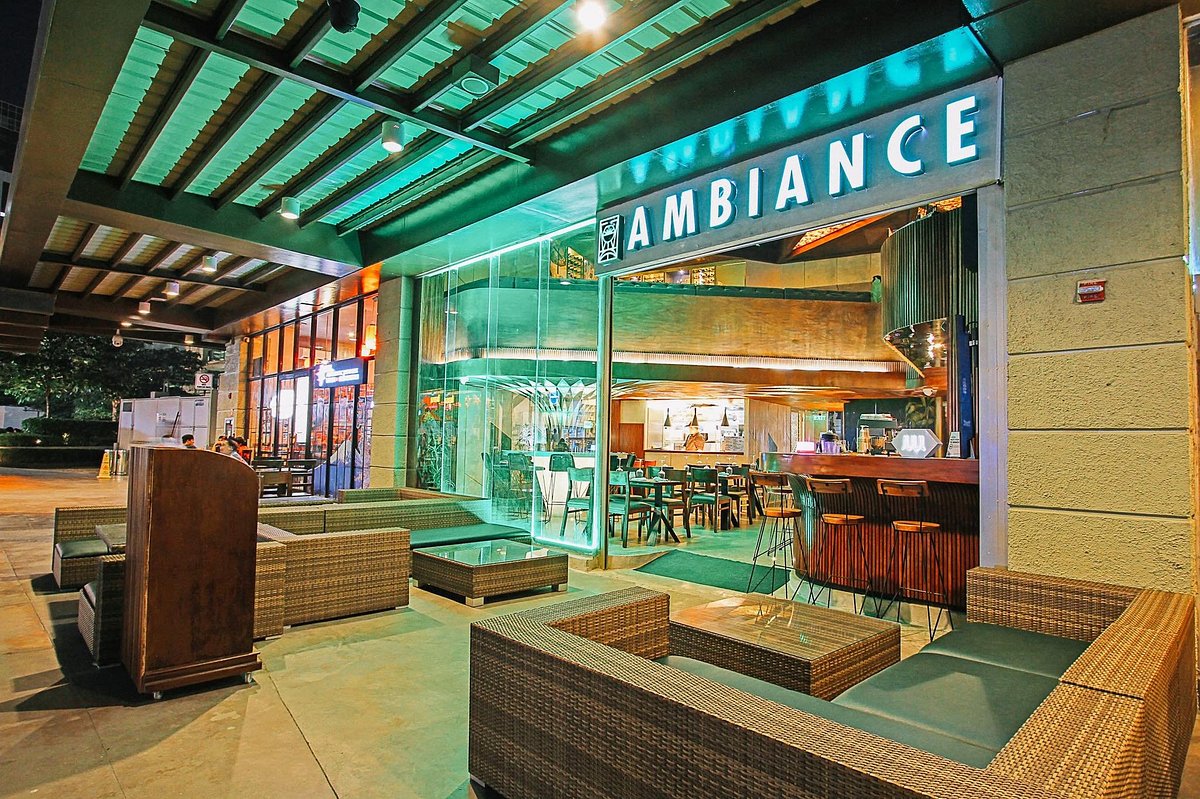Best Asian Restaurant Islamabad: Experience Flavors from Throughout Asia
Best Asian Restaurant Islamabad: Experience Flavors from Throughout Asia
Blog Article
Savor Genuine Oriental Food With a Pan-Asian Twist for a Cooking Adventure
Embarking on a cooking trip via genuine Eastern cuisine, improved with a Pan-Asian spin, provides a distinct opportunity to discover the abundant tapestry of tastes that define the area's varied cooking practices. As you ponder these enticing recipes, consider the cultural narratives and historical impacts that form them, each bite offering a story waiting to be uncovered. pan asian dining Islamabad.

Exploring Pan-Asian Tastes
In the realm of global gastronomy, Pan-Asian food sticks out for its amazing diversity and the unified interplay of flavors from different Asian cultures. This cooking method celebrates the special ingredients and rich practices discovered across the continent, creating a tapestry of preferences that is both enjoyable and interesting. Trick to Pan-Asian food is its capacity to balance contrasting tastes-- sweet, salty, spicy, and sour-- while highlighting the freshness and top quality of each ingredient.
From the umami-rich soy sauce of Japan to the fiery chili peppers of Thailand, Pan-Asian food offers an extensive scheme of tastes. These elements are commonly integrated in creative ways, enhancing meals with layers of intricacy. For example, making use of aromatic natural herbs such as lemongrass and cilantro, usual in Vietnamese and Thai cuisine, adds a rejuvenating illumination to dishes, while the unification of coconut milk provides a luscious, abundant appearance.
The emphasis on fresh produce and aromatic flavors guarantees that each meal is not just a banquet for the taste however also for the detects. Pan-Asian cuisine welcomes diners to embark on a culinary journey, exploring the vast and varied landscapes of Oriental gastronomy with every bite.
Fusion Meals to Attempt
While Pan-Asian food is commemorated for its conventional tastes, the modern-day culinary landscape is increasingly embracing combination dishes that mix these traditional elements with influences from various other areas. This ingenious technique not only honors the abundant heritage of Asian cookeries however likewise presents novel taste experiences that interest modern tastes buds.
An archetype of such a fusion meal is the Korean-Mexican taco, where marinaded bulgogi beef is covered in a warm tortilla, covered with kimchi and a hot gochujang-infused salsa. This mix weds the strong, full-flavored flavors of Korea with the vivid, fresh elements of Mexican cuisine. In a similar way, sushi burritos have gotten appeal, amalgamating the fragile creativity of Japanese sushi with the passionate, hand-held ease of a burrito, commonly featuring blend ingredients like tempura shrimp and avocado with a drizzle of wasabi mayo.
One more notable recipe is Thai curry ramen, which infuses the velvety, fragrant spices of Thai curry right into the reassuring brew of typical Japanese ramen, creating a harmonious mix that entices the detects. These fusion dishes prolong past plain novelty; they stand for a culinary dialogue in between cultures, urging exploration and innovation on the planet of Pan-Asian cuisine.
Crucial Components and Flavors
To genuinely value Pan-Asian food, one should comprehend the necessary components and flavors that form its foundation. This diverse culinary design attracts from an abundant tapestry of Eastern practices, using a harmonious blend of flavors and textures. Key active ingredients consist of soy sauce, fish sauce, and oyster sauce, which impart a tasty umami deepness vital to Asian dishes. Complementary to these are rice vinegar and mirin, lending a delicate acidity and sweet taste.
Aromatic elements are critical, with garlic, lemongrass, and ginger being ubiquitous throughout various Pan-Asian dishes. These active ingredients provide a great smelling base that improves the intricacy of flavors. Spices such as celebrity anise, cardamom, and cinnamon introduce warmth and character, resembling influences from areas like China and India.

Cooking Methods and Tips
Grasping the art of Pan-Asian food needs knowledge with its distinctive cooking strategies, each contributing to the lively tapestry of tastes this cooking tradition is commemorated for. Central to these approaches is the stir-fry, a rapid cooking technique that protects the nutritional stability and dazzling shades of ingredients. Using a wok, the stir-fry technique enables also heat distribution, essential for achieving the characteristic structure and taste equilibrium of Pan-Asian recipes.
An additional basic technique is steaming, especially common in Chinese cuisine. This gentle technique keeps the all-natural tastes and nutrients of active ingredients, making it perfect for fish and shellfish and veggies. Dumplings, a precious staple, often gain from steaming, resulting in soft, delicious textures.
Grilling, additionally indispensable, imparts great smoky midsts to dishes such as Korean bulgogi or Japanese yakitori (pan asian restaurant Islamabad). This strategy typically involves marinating ingredients, enabling flavors to pass through deeply prior to cooking over an open flame or warmer
Finally, mastering the art of balancing flavors-- pleasant, sour, salty, bitter, and umami-- is essential. Properly layering these aspects can elevate a recipe from normal to remarkable, using a complicated and satisfying cooking experience that embodies the significance of Pan-Asian Get More Information cuisine.
Dining Experiences Worldwide
Around the world, Pan-Asian food offers an unmatched dining experience, commemorated for its rich tapestry of tastes and dynamic discussions. This culinary sensation has transcended social boundaries, recording the hearts and palates of food fanatics worldwide. In worldwide cities like New York, London, and Sydney, Pan-Asian dining establishments serve as melting pots where culinary practices from Thailand, Japan, China, and beyond assemble, providing diners with an eclectic mix of recipes that highlight the region's variety.
The worldwide charm of Pan-Asian food depends on its ability to provide both credibility and innovation. Chefs skillfully wed standard active ingredients such as lemongrass, soy sauce, and miso with contemporary methods, resulting in dishes that are both refreshingly brand-new and acquainted. This combination allows diners to begin on a culinary journey that appreciates heritage while embracing modernity.
Moreover, eating experiences are boosted through thoughtfully created settings read what he said that reflect the ethos of Pan-Asian looks. From minimal Japanese-inspired insides to lively Thai-themed rooms, each dining establishment supplies an one-of-a-kind setting that matches the cooking offerings. Consequently, patrons are not just eating a dish yet partaking in a social experience, making Pan-Asian eating a genuinely worldwide sensation.
Verdict
The expedition of Pan-Asian cuisine offers an extensive understanding of the detailed interaction of flavors and culinary practices throughout Asia. By accepting blend meals such as Thai curry ramen and sushi burritos, the cooking journey not only highlights the adaptability of standard components however also showcases innovative modern-day techniques. This gastronomic journey, enhanced by cooking approaches and vital seasonings, provides a special chance to value the social variety and cooking artistry that define Pan-Asian food on an international range.
Beginning on a culinary journey via genuine Oriental cuisine, improved with a Pan-Asian twist, provides an unique possibility to explore the abundant tapestry of tastes that specify the area's diverse culinary practices.In the realm of worldwide gastronomy, Pan-Asian food stands out for its remarkable diversity and the harmonious interplay of flavors from numerous Asian cultures. Trick to Pan-Asian cuisine is its ability to balance different flavors-- wonderful, salted, spicy, and sour-- while highlighting the freshness and high quality of each component.

Report this page